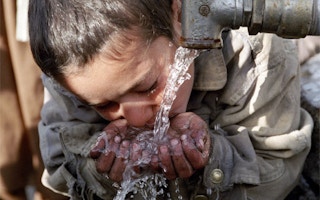More than 75 per cent of the countries in Asia and the Pacific are experiencing a serious lack of water security, with many of them facing an imminent water crisis unless immediate steps are taken to improve management of water resources, says a new study prepared jointly by the Asian Development Bank (ADB) and Asia-Pacific Water Forum (APWF).
“While the Asia-Pacific region has become an economic powerhouse, it is alarming that no developing country in the region can be considered ‘water-secure’,” said Bindu Lohani, ADB’s Vice President for Knowledge Management and Sustainable Development. “Countries must urgently improve water governance through inspired leadership and creative policymaking.”
Asian Water Development Outlook 2013 provides the first quantitative and comprehensive analysis of water security on a country by country basis in the region. It examines all dimensions of water security from the household level to water-related disasters, and uses indicators and a scaling system to rank the progress of each of the 49 countries under assessment.
The study found that 37 developing countries in the region are either suffering from low levels of water security or have barely begun to engage in the essential task of improving water security. Twelve countries are shown to have established the infrastructure and management systems for water security, while no country in the region was found to have reached the highest model level of water security.
South Asia and parts of Central and West Asia are faring the worst, with rivers under immense strain, while many Pacific Islands suffer from a lack of access to safe piped water and decent sanitation and are highly vulnerable to increasingly severe natural disasters. By contrast East Asia, which has the highest frequency of hazards in the region, is relatively better off due to higher levels of investment in disaster defenses, but urban water security remains poor in many cities and towns.
Click here to read the full story.










